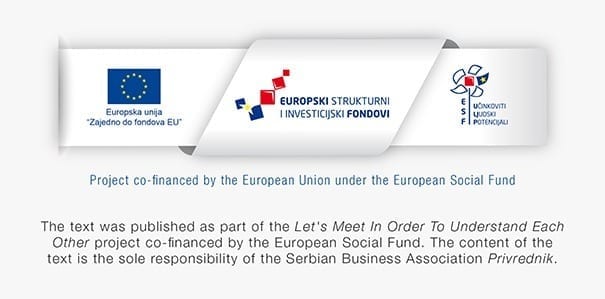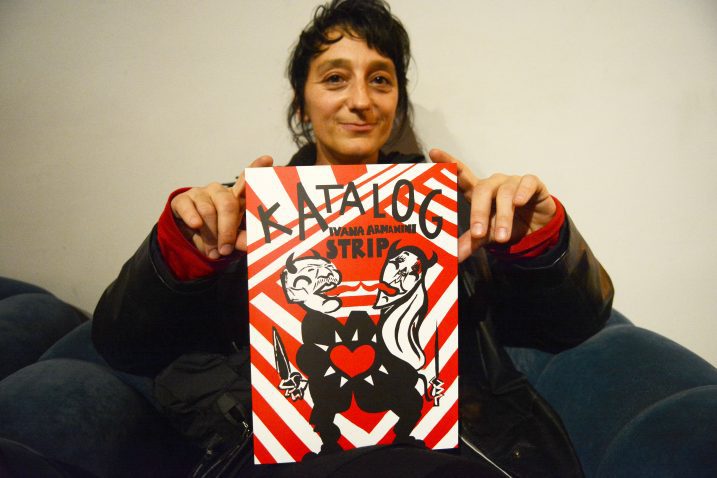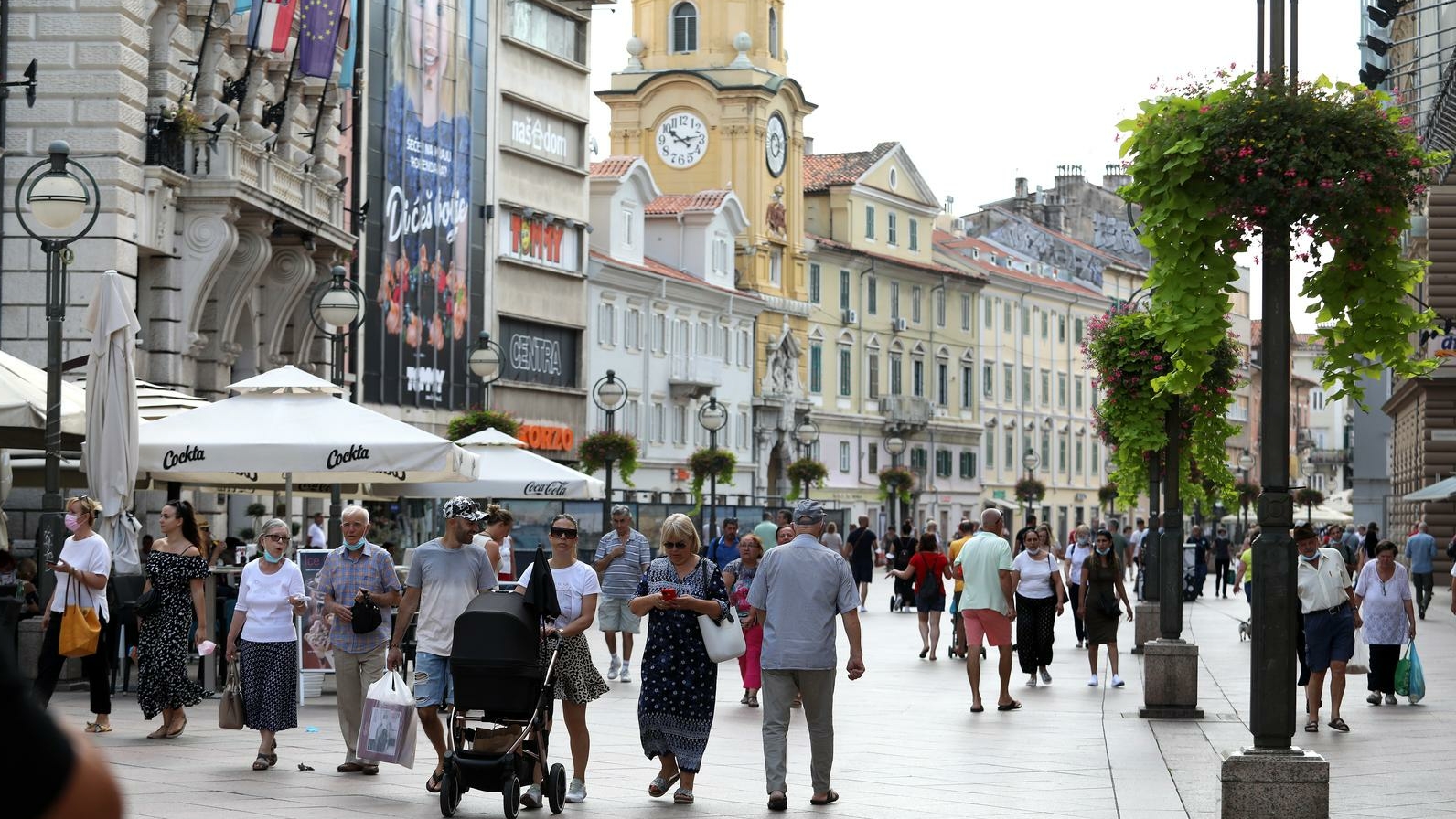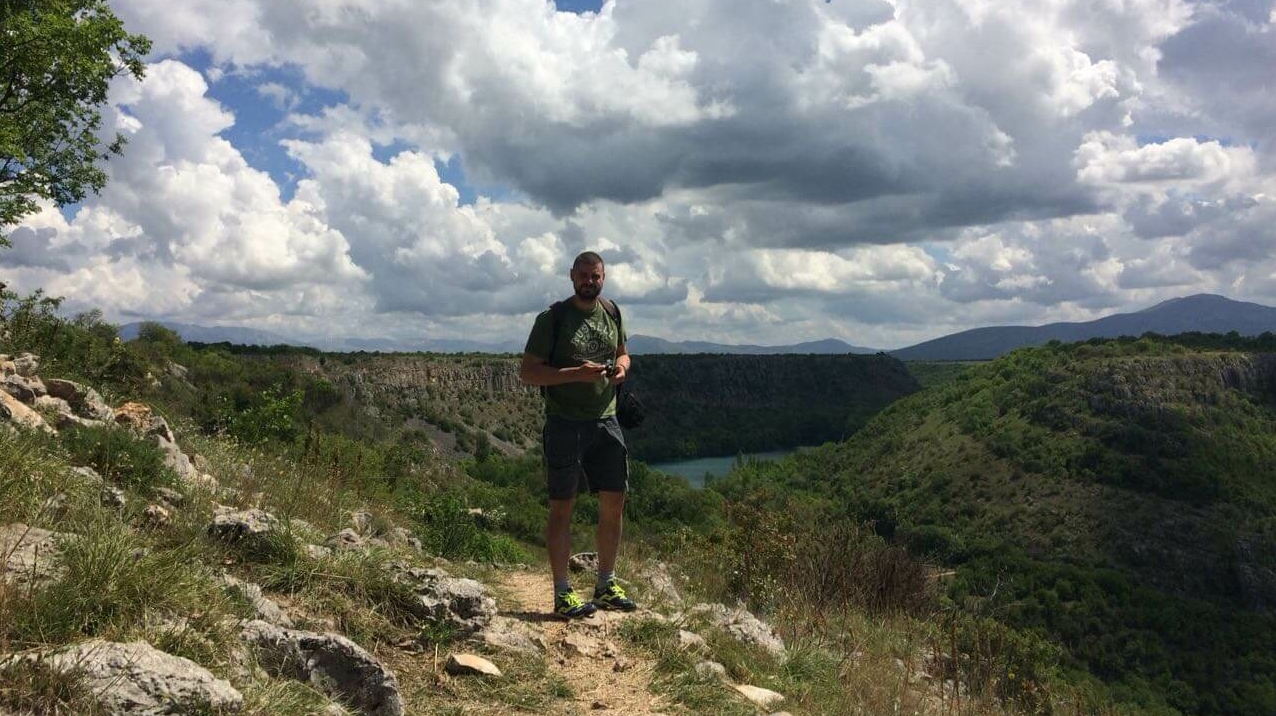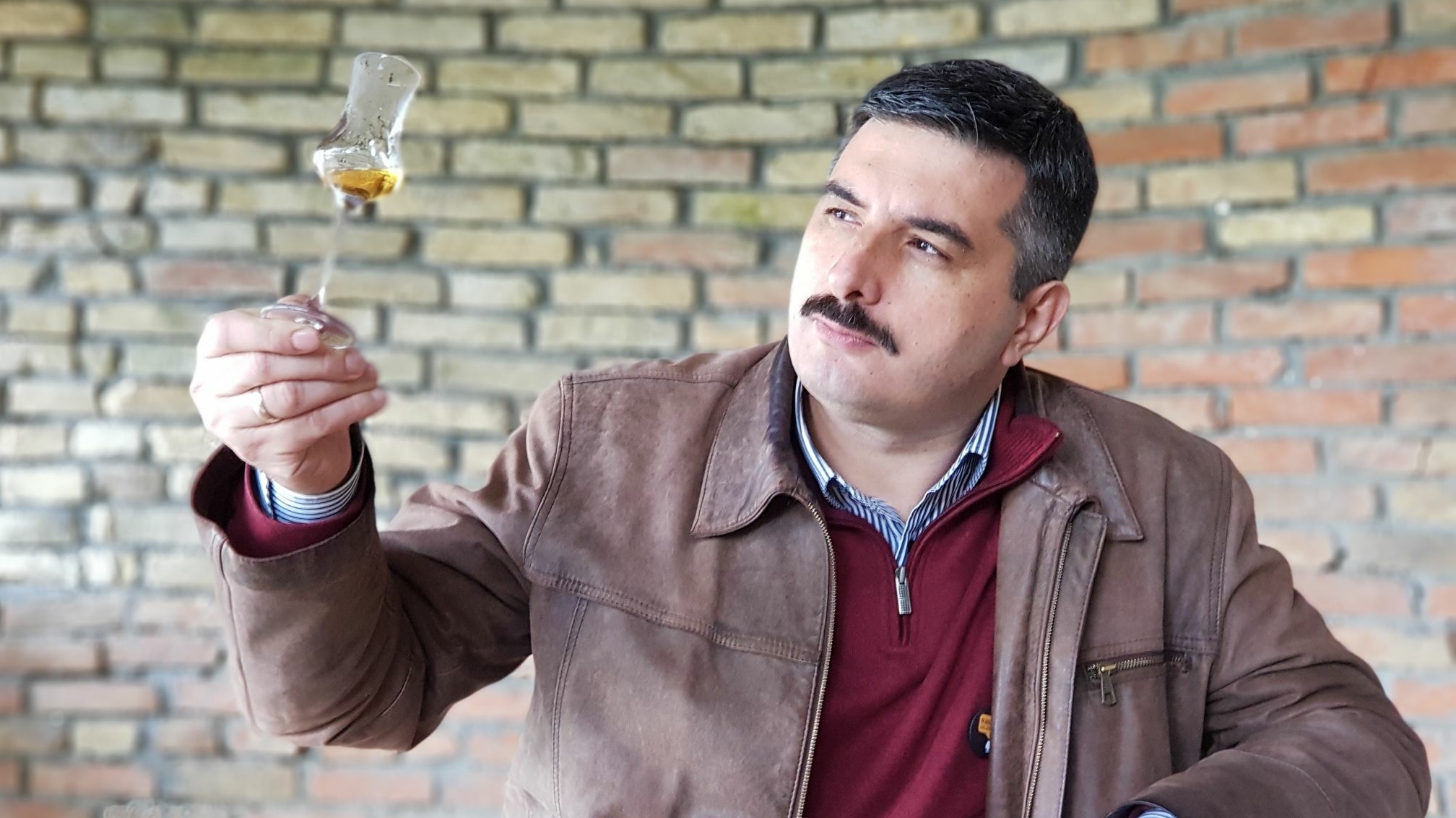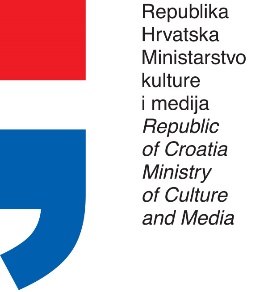Since 2002, for two decades precisely, the Komikaze network has actively and consistently promoted the spread of comic strip art. Based in Zagreb, Komikaze virtually visits comic strip authors in the region and peeks over their shoulders to see their latest work. Once a year, that work materializes in the comic strip magazine of the same name. But the activity of this network is daily and omnipresent, dedicated and documented and, perhaps most importantly, available to everyone at every moment. This is primarily thanks to the editor-in-chief and one of the webzine’s founders, Ivana Armanini, as well as the numerous comic artists who express their thoughts and ideas issue after issue. Ivana and two comic authors from Croatia and Serbia, Damir Stojnić and Radovan Popović, talked to P-portal about the comic strip scene in the region and the activities of Komikaze.
You have tremendous insight into generations of comic strip authors from the last two decades thanks to the Komikaze webzine. The themes and the tools are up to the authors, but are there still connections between different works and styles?
IVANA: I started Komikaze with the Cvek brothers as a web project because there was no room for publishing comic strips. This accumulated material now offers an insight into two decades of comic strip generations, permanently accessible to all and free at komikaze.hr. The idea is to always keep the door open, letting in the winds of different styles, nations and generations. The consistency lies in the provocative freshness of authorial voices, sometimes melodious, sometimes shrill, but always their own, wherein their value lies. As curator Bojan Krištofić says: “Komikaze comic strips primarily celebrate individuality, originality and unpredictability, even when that is against their interest.” The idea that is always present is that every author creates their own rules and that there is no definition of authorial comics. The main function of this type of comic strip is exploration, experiment, provocation and social critique, making it a constant challenge for all involved. That is the main theme, while the rest are “current deviations”.
The faith and magic of creative work
Is it true that the pandemic has been the dominant theme since 2020?
IVANA: The coronavirus is one of those rare “super-themes” that arrogantly force themselves on us and is the focus of the “covix_C19” webzine, created in June 2020. After that, we had the “Street girls” topic as part of the “Femicomix” program, which certainly influenced the content of the issue, but the choice of subject was still free. The pragmatic Komikaze idea is to filter out yearly a select issue from the hysterical, dense rhythm of comic strip activities and web issues, raising the visibility of that selection and expanding the comic strip archive. So it has been done every four months (give or take a day) for two decades. The Komikaze album is created from the material collected over the whole year – the webzine, fanzine, exhibitions and magazine exchanges at comic festivals.
In the new, 20th issue of Komikaze, we watch and read insights into the faith and magic of creative work; we scan repetitive patterns of life, the position of the weak and the marginalized and their fight for liberation, apocalyptic projections and reflections on the coronavirus reality.
Your webzine’s contribution to increasing the visibility of regional comics is immeasurable. Does this type of art today mostly rely on the efforts and dedication of individuals like you?
IVANA: Thank you very much! We have used the web since the beginning for pragmatic reasons because our boat is leaking on all sides. I mean here the practical side of creative survival. As an author, you need to work continuously, but you also need communication, internet posts, exhibitions – in short, an audience. All the while, that is probably a nuisance to you because you would rather draw. The first level of organization towards the audience is a webzine and/or fanzine. It costs at least 1000 euro to have your webpage made, and only one bookstore in Zagreb takes fanzines. The next level is an exhibition and a professional magazine. A gallery or a bookstore will take 40-50% of your profits, all the while knowing little or nothing about the material they sell. Half of the registered mail gets lost in the mail in Croatia, and you pay the price of two printed magazines for small packages from abroad. Your CV, based on short-term authorial work, is unusable in the business sense because institutions don’t see it as employment, and if you haven’t earned enough, you won’t get the coronavirus financial support, and so on. In short, the situation for artists and small publishers looks like a huge and bottomless black hole. However, the project has had the support of the Ministry of Culture and the City of Zagreb since the beginning, as a media outlet of innovative practice, and the album has had the support of the city for the last four years. The support for the Komikaze association is modest and often varies, but it is constant and has enabled this two-decade survival through authorial cooperation and partnerships.
Besides offering a publishing platform, Komikaze enables authors to meet each other. Is that a conscious goal for you or a natural, spontaneous byproduct of the webzine? Are there enough opportunities for comic strip authors to meet each other in Croatia and the rest of the region?
IVANA: Before the pandemic, there were a few places where comic authors could meet, but now most of the events have moved to the web. The development happened on social media and the internet in general. The cohesive power of culture is great, and the Komikaze network has been growing since 2002 through some 300 events, workshops, exhibitions and comic festivals and over 100 web and paper editions. Komikaze is an online place for the promotion and distribution of authorial comics, which materialize once a year in the underground comic strip magazine of the same name. The webpage has 60,000 visits a year, which is an OK result for our low-key scene. Two albums on average are viewed every day on the webpage, and the audience is from all the continents. Quality artists from the global and local alternative scene, more and less known, continuously contribute to the issues, webzines and print albums in original ways, and they contact us on their own, or we call them directly. Komikaze brings together works from the Croatian language area, establishing itself as a unique and significant local phenomenon, but international artists have also participated since the beginning.
You celebrated your 20th anniversary in January. Looking back on those two decades, what has the journey been like?
IVANA: It has been very colorful and dynamic, at times cloudy with brief showers. I’d do it all again, but I don’t like looking back. I am more concentrated on the moment we are in now. Colleagues from “Imaginarni muzej” reminded me of Malreaux’s concept: “‘Musée Imaginaire’ is a collection of works which we admire, which inspire us – in short, which have the power to keep us alive.” This alive and constantly growing beast with over 6000 pages and illustrations is still kicking; what is more, it’s ready for the top comics festival, Angoulême.
You will be guests in France on that occasion, since you received an important recognition – the 2020 Alternative Comics Award. How important are awards of this kind in the comics scene, and how important are they to the Komikaze crew?
IVANA: This award is important because it is more than 40 years old and is awarded by the top authorities in the comics world gathered in the jury of the most prestigious European comics festival. Other important international awards are two American ones (Eisner and Ignatz Awards), which are also on our agenda. Awards are important as a kind of tattoo that reminds you that you are recognized and validated when the rainy days come. This award is also concrete and included 1000 euro from the French Alternative Publishers’ Union in 2020, participation in the 2021 jury and a paid appearance at the festival in 2022. We have received the jury’s explanation of the award, which we unfortunately couldn’t receive in person because the results came too late: “Editing comic publications is more like a marathon than a sprint. The editor’s work is exploration and experimentation. Komikaze is one of the best examples, whose editor, Ivana Armanini, chooses the content of every issue with consistency and a sharp artistic radar. Every year, the Komikaze album offers a careful selection of the works of somewhat known and completely unknown names from the global alternative scene of comic strip originals. Komikaze is a long-standing and regular participant of the Angoulême alternative award (since 2004), and in 2020, the jury awarded the consistency and the focus on authors and discoveries of entire generations from Eastern Europe, a scene much more prolific than anyone could imagine.”
If the epidemiological situations allows, we are going on the road in mid-March 2022.
Recognizing without knowing each other
You have been working with Komikaze for two decades. How did it start, and why did you choose to stay active on this platform to this day?
RADOVAN: It wasn’t a conscious decision, intention or plan, but we simply gravitated towards each other without knowing about each other. We were thrilled when we found out that there is a collective like that in the neighboring country. We recognized each other even though we had never met; the works of Croatian authors gathered in Komikaze amazed us, and the cooperation started. At the time, we were working very actively on our Kosmoplovci mission, and we established a strong bond with Komikaze, a friendship, sisterhood and unity. We traveled together to festivals, dragged our gangs across Europe, the Balkans and the web, met at community actions, published joint issues and, most importantly, included more likeminded actions, groups, subgroups, initiatives, teams and gangs into our network.
How much does Komikaze contribute to increasing the visibility of comic strip authors in the region and establishing connections between them?
RADOVAN: Komikaze is the most important, consistent and quality place, time and space for authorial, alternative, underground comics, not just in the region, but across Europe and other places in the world it has so far reached. Comics of established authors, legends of the underground, masters of experimenting, disjointed classics, dirty underground, alternative approach, original, autochthonous and autonomous comics all find their place both on the webpage, where something always happens and which I regularly visit, and in the print edition, which has, over the years, gained experience, weight, balance and quality to become what it is today. That has been recognized by the international comics community and crowned with the award for the best alternative publication at the festival in Angoulême. People without a knowledge of comics, which means without general knowledge, don’t understand the importance of that and the honor this recognition is.
Is cooperation between Serbian and Croatian authors commonplace? Are there other active meeting places for them?
RADOVAN: Our cooperation with Komikaze, as well as with other worldwide, floating pirate ships, stranded randomly on the soil of any city of the region, the Balkans, a former, future or immaterial Utopia, limitless region or borders that, like Gypsies, we don’t acknowledge, is getting stronger, the production better and print runs bigger; we’re getting younger and crazier the older we are; we meet and never part at festivals, occupied factories, secret passages, street fests and speakeasy galleries. Anyone who wants can find us, on the web or by accident, although I don’t believe in accidents.
You are, among other things, the founder of the Studiostrip platform and also organize comic strip events and fanzines. Does this type of art today mostly rely on the efforts and dedication of individuals like you or Ivana?
RADOVAN: There is this idea that everything starts with the individual. That is true, but every socially conscious individual not limited by their ego and the traditional idea of man, artist and individual is aware that by associating and pooling strength and resources (and I don’t mean only material resources – on the contrary), by joining or starting a group, association or editorial staff, our strength and energy not only add up but multiply. This unity and brother-sisterhood founded on solidarity and humanistic principles we share can be our only advantage, strength and potential energy for days to come, much more than a business or corporate contract. As someone who has been in the subculture since the 1980s, who has later founded the Kosmoplovci group, Studiostrip platform and Novo Doba festival, who is now preoccupied with their own authorial work but still follows the work of collectives such as Matrijaršija, as an editor, publisher and author, I stand firmly behind all I have said.
I hear the new album is still not out, but I believe you have been able to see some of it in electronic form. What do you think of the new sample of the regional comics scene?
RADOVAN: I am full of optimism and awash with impressions. The years of experience have not hardened me, but have rather deepened my sense of the beautiful and ugly, strong and stronger, new forms and platforms and ways of organizing and self-organizing. There are many talented authors, female and male – I use that order deliberately. The idea of the comic strip has undergone a big revolution, perhaps more than other forms of expression. There is something unique, subtle and otherworldly in comics, especially today, and Komikaze is the best example of that. I feel very proud to be a part of the past and present of such a cultural excess, movement and event.
Looking back on your work so far, what changes do you see in your artistic expression, especially in the newer work?
RADOVAN: Experience is very important and does not necessarily mean years, but rather a work ethic, which my collaborators and I never lacked. I rely less and less on others, on movements, schools, styles and trends. I realize and feel more and more that you have to listen to yourself first, no matter how hard that might be, and that you have to walk your own path, together with someone else, if possible. If not, it doesn’t matter – the journey is what matters.
Creativity and resistance
Your first comic, Report: Subpolis, was published by Komikaze, and you are still active on that platform. What is your relationship with it?
DAMIR: Report: Subpolis is not my first comic, but the first comic I ever published. It was created by combining some earlier drawings and aquarelles that I included in my text about the Underground City, which I’m developing as a project in Labin with the art collective Labin Art Express. Labin was the site of the largest coal mine in this part of Europe. It has been decommissioned since the mid-1980s, and we are trying to convert it into a futuristic city-state with art as the basic principle. I created my first comic in 1990 and called it End. I was 18, and it was made in the same style I have been developing to this day. Ivana has it on her computer, so it might see the light of day someday. When it comes to my relationship with Komikaze, I can say that I feel completely at home with all my demons there. I think Ivana has created an invaluable space for expressing creative freedoms, a playground for experiments and unconventional approaches of all kinds. The Angoulême award and twenty years of work of increasing quality are a testament to that.
Through Komikaze, you also met Radovan Popović from Belgrade, who then helped in publishing your first long-form album Medusalem. I would say that its sensibility is also close to Radovan’s expression. How much have you two influenced each other, advised each other or collaborated?
DAMIR: Radovan and I had never met before our work was in the 18th, award-winning Komikaze. I had never seen his work until then, nor he mine. I have mentioned that I have been working in this idiom since 1990. I later made three other comics from the “Boreal cycle”, as I call it: Asma (1995), Boreal (1998) and Wendigo (2001). The last two were published in that now legendary 18th issue. Radovan then sent to my inbox a long and beautiful letter with a collaboration proposal. I, of course, said yes, and this correspondence resulted in the publishing of my Medusalem and the exhibition of my work at the Zadnje doba festival organized by Matrijaršija. Since that letter, we haven’t communicated at all, except for putting hearts on each other’s work on our Facebook profiles. I love his work, as well as the work of some other people from Studiostrip. I recently snagged two of their issues in a second-hand bookshop in Rijeka: Raskal and The Secret of the Spider’s Blood by Aleksandar Opačić. I wondered how these pieces of genius eluded me for so long.
You mentioned that you have experienced a new youth in a creative sense thanks to comics. Is that energy still there?
DAMIR: Of course. That energy gives the only true meaning to my work in comics, but also art in general. Recently I participated in the event “24-hour comic strip drawing” and created ten pages of the comic EraZor in that time. I threw myself into it without any preparation or scenario. It was an experiment for me, something like automatic writing. I liked the result so much that I decided to develop the scenario further and complete the plot, so I’m working on it now, as well as on another long-form comic I started in 2019, called The Hyperborean. Its first episode was published in issue #53 of the Komikaze webzine, and ten pages of EraZor can be seen at 24satnocrtanjestripa.com. I have somewhat turned towards the more classical form of comics, at least when it comes to narration. I’m now interested in more linear comic narration, and I enjoy it so much that it has become plain rude. I neglect daily obligations, friends and my girlfriend. It has come to that.
You have passed a kind of milestone in the latest issue of Komikaze. What exactly is it, and where did this surge of articulate inspiration come from?
DAMIR: The milestone you ask me about concerns the fact, which shocked even me, that I have drawn nearly 200 pages of comics in the last two years. This surge is probably the result of my years-long inability to paint anything. I had a difficult, depressive phase, and the mere thought of entering a studio repulsed me. Drawing comics requires less space than painting, so I started at the kitchen table, which soon became a scene of terrible chaos full of trash. In making comics, I often use the technique of imprinting different textures from various objects, such as different cloths, sponges, fabrics, pieces of wood, leaves, stones, rotten fruits and vegetables, so you can imagine the mini garbage dump that formed there. This technique was first used, as far as I know, by the surrealist painter Max Ernst, and he called it decalcomania. Only recently I found out that it was much used by the genius Argentinean comic artist Alberto Breccia, especially in the masterpiece Perramus, which I wouldn’t even know about had it not been recently published by Fibra. In short, creating comics has helped thaw my personal creative “ice age”, and I think that working with Komikaze and Ivana has played a big part in that. For an artist, finding a platform or scene which matches his sensibility means a lot. The underground comics scene thrills me with its unbounded, perfectly unmarred enthusiasm, which I find less and less in the contemporary official art scene.
The new Komikaze album is a kind of cross section of the regional comics scene. How do you see it, and have you noticed any changes in the last two years?
DAMIR: The underground comics scene Komikaze works in is very lively, fresh, enthusiastic, interesting and, of course, fun. I see that in the yearly almanac-anthology of Komikaze, which has only gotten better with the years. Enthusiasm is especially important. You can feel that these authors create completely unencumbered by any goal other than simply to express and tell stories that matter to them, or even just express a simple nothing, as a pure, unconditioned, purpose-free impulse. And that is close to poetry, as is stated in the Komikaze manifest. In today’s world, where art is pushed more and more into the one-dimensional relation of product-profit, this approach has great relevance, and in it I see the deeper purpose of platforms such as Komikaze. They maintain a zone of resistance to a world of increasingly fascistic consumerism. They are guerrilla enclaves in a wider archipelago of “temporary autonomous zones”, as Hakim Bey defined them long ago. They can also be compared to the rhizomic principle of acting within “soft-structured” communities of “new nomads”, which Guattari and Deleuze wrote about in Capitalism and Schizophrenia. The need for such “plateaus” is becoming more and more evident because, deep down, we are all exhausted by the alienation and apathy served to us by the official structure of art presentation, as well as the alienating practice of its “creative” industrialization, which, of course, includes computer-made, commercial comics polished to death.
You also work at the Academy of Applied Arts in Rijeka. What do you feel is important to pass on to and awake in young people?
DAMIR: Creativity and resistance! I encourage them to find their own authenticity, their own artistic expression as a reflection of their inner strivings, unencumbered by anything someone else might have to say. Mikhail Bakunin rightly said that humans are motivated by two basic impulses: the need for creativity and the instinct for resistance. Today’s society heartily tries to destroy these two important components in people. More and more, art is being used as a tool for achieving political goals. It would serve us all better if politics served the goals of art. I feel it is my mission to restore these two things, as an artist, a professor or simply as a human being.
Translation from Croatian: Jelena Šimpraga
